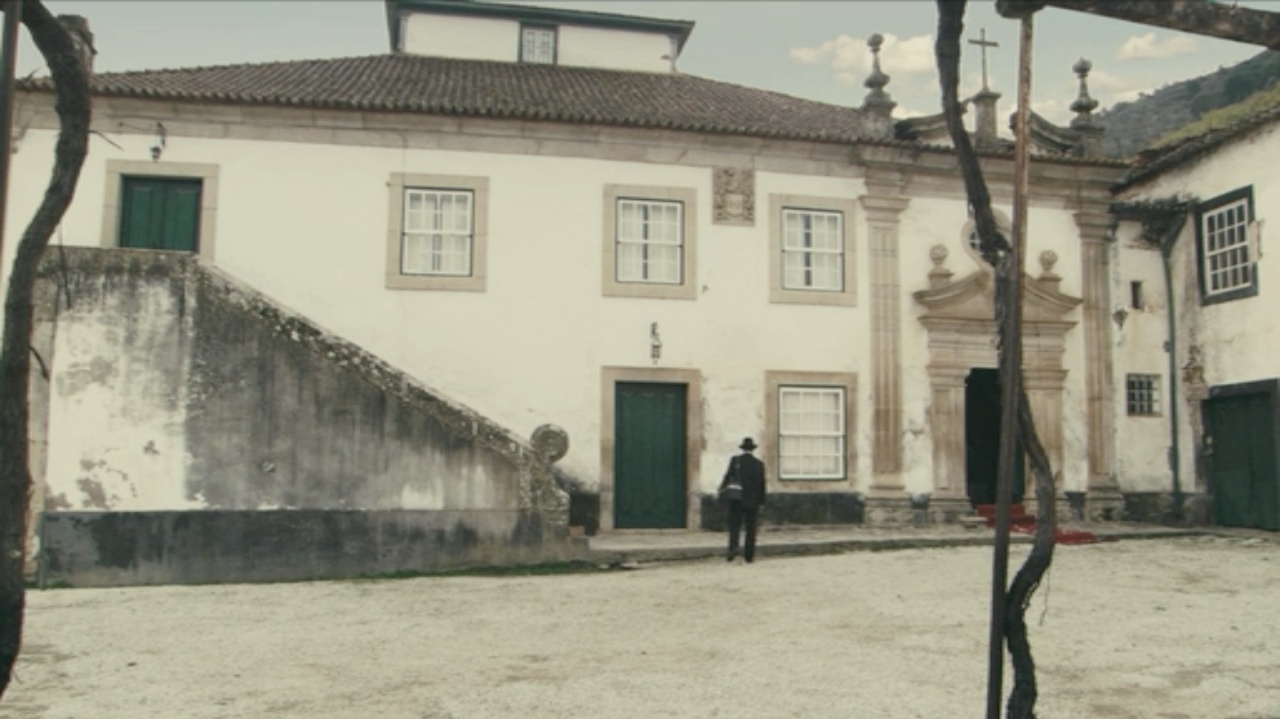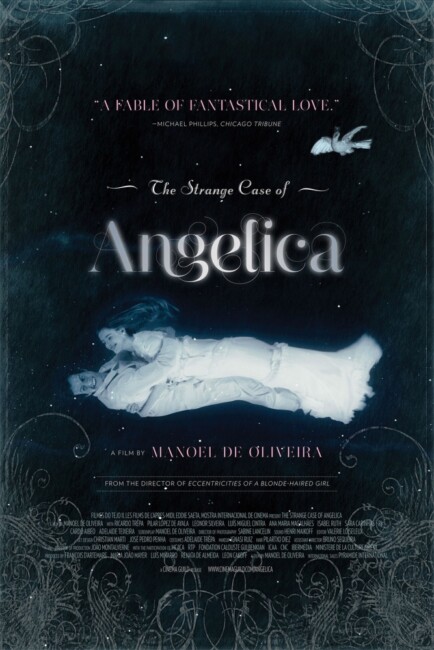(O Estranho Caso De Angelica)
Crew
Director/Screenplay – Manoel de Oliveira, Producers – Francois d’Artemare, Renata de Almeida, Maria Joao Mayer & Muis Minarro, Photography – Sabine Lancelin, Visual Effects – Bikini (Supervisor – Philippe de Szabo), Production Design – Christian Marti & Jose Pedro Penha. Production Company – Les Films de l’Apres-Midi/Eddie Saeta S.A./Films do Tejo/Lusomundo/Ministerio de Cultura/RTP/Mostra Internacional Cinema.
Cast
Ricardo Trepa (Isaac), Pilar Lopez de Ayala (Angelica), Leonor Silveira (Madam Justina), Ana Maria Magalhaes (Rosa), Luis Miguel Cintra (The Engineer)
Plot
In the middle of the night, the photographer Isaac is called to the home of the wealthy Portas family to take photos of the wife Angelica who has just died. As Isaac photographs Angelica in repose, he thinks he sees her turning and smiling at him through the lens. Subsequently, her ghost continues to appear to him. The others in his boarding house are concerned as Isaac becomes increasingly withdrawn and obsessed.
Portuguese director Manoel de Oliveira holds the record for being the oldest working filmmaker in the world – he was 102 years old at the time that he made The Strange Case of Angelica and subsequently went on to make a further six filmed works before his death in 2015 at the age of 106. He made his first film, a documentary short, in 1931 and his first feature film in 1942. It was not however until the 1980s and 90s, the point when he entered his seventies and eighties (usually about the period most people have retired), that de Oliveira’s career as a director took off. He turned out a regular string of films, around one per year, since then. His work attracted festival attention, although was never been popular enough to see much in the way of arthouse play. De Oliveira had ventured into genre cinema once before with The Convent (1995), an ambiguous film about pacts with the Devil.
The Strange Case of Angelica is an ostensible attempt on Manoel de Oliveira’s part to make a ghost story. The film has all the elements out of which you might expect a standard ghost story to emerge – a man (played by de Oliveira’s grandson Ricardo Trepa) becoming obsessed with a beautiful dead woman after her image appears to move in the photos he has taken of her corpse; her ghost continuing to appear to him; his obsession taking over to the exclusion of all else, including those around him thinking he is going crazy. You would expect all of this to coalesce together into something akin to Shutter (2008) about ghostly photographs, or films like The Forgotten One (1989), The Returning (1991) or The Footstep Man (1992) about lonely men falling for ghostly women and trying to cross over and join them.

Going to watch The Strange Case of Angelica in a festival setting, you expect a work of class but I found it an intensely frustrating film. Perhaps the greatest complaint you might make is that it is tedious. Nothing ever seems to happen – in fact, that is an understatement, it verges on the soporifically slow at times. It is frequently difficult to see where the film is trying to go or what point Manoel de Oliveira is trying to make. Most of the film consists of people talking – lots of scenes with the landlady and three lodgers in the boarding house as they discuss an engineering project that has been cancelled in between speculating about the oddness of Ricardo Trepa’s behaviour, or scenes with Trepa becoming fascinated with taking photos of men working in the fields that have no lap over with his obsession with the ghost.
Yet for all that, we never gain any insight into Isaac as a character – like why he becomes so obsessed with this woman. Is he someone lonely of heart, has feelings for her or just following an obsessive connection? We never know because he remains a blank as a character. When he dies and goes off to join the ghost woman at the end, we feel less like two lovers are being united than we could care less about either of them. Nor do de Oliveira’s orchestration of the ghostly apparitions help – the woman is an optically overlaid figure in black-and-white with some spotty visuals like something that might have sufficed for ghostly apparitions in 1940s films but hardly today.


